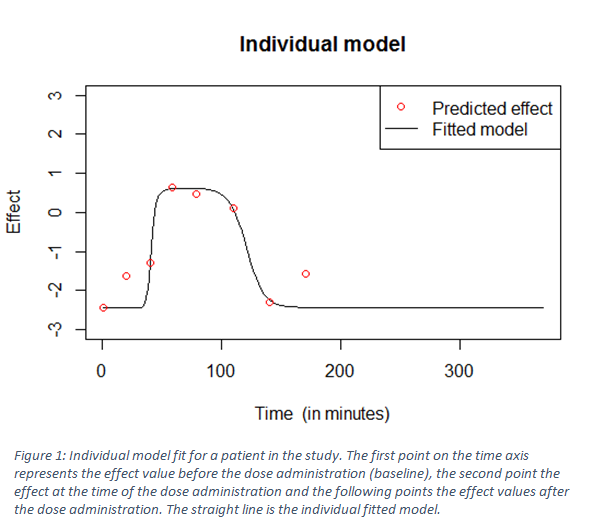Session Information
Date: Thursday, June 8, 2017
Session Title: Parkinson’s Disease: Clinical Trials, Pharmacology And Treatment
Session Time: 1:15pm-2:45pm
Location: Exhibit Hall C
Objective: The aim of this study is to investigate the feasibility of using a dose optimization algorithm for dose individualization of microtables of levodopa.
Background: Motor complications in PD are managed by individualizing oral levodopa treatment. An algorithm that uses sensor ratings (Memedi et al., 2016) to produce individualized dosing schemes was developed. Dosing schemes with specific intervals and dose sizes can be programmed into the MyFiD device that contains microtables (Flexilev) of levodopa-carbidopa.
Methods: A clinical trial was conducted in Gothenburg, Sweden. For a two week period before a test day the patients used the MyFiD device with a dosing schedule equivalent to their regular doses and wore the Parkinson’s kinetigraph (PKG) to monitor motor states in the last six days. Neurologist FB reprogrammed the device based on the PKG data and the clinical impression during the test day. The patients performed alternating hand movements at a pre-determined time schedule, before and following a single dose of levodopa (120% of the normal morning dose), while wearing one sensor on each wrist (Shimmer3 sensor).
The signals from the sensors were mapped to a dose-effect scale, providing an effect value for each test. An individual dose-effect model was fitted to the values (Figure 1) and the fitted model was used as input to a dose optimizing algorithm. The algorithm produced optimized dosing suggestions for multiple dosing intervals, a different suggestion for each one. The predicted outcome of each interval was visualized to facilitate the identification of the optimal interval. The dosing suggestions of the algorithm were compared to the experts’ prescriptions for the interval that the neurologist chose. The algorithm derived optimal interval was compared to the neurologist’s therapeutic decision.
Results: Preliminary results from 14 patients have been obtained. In 10 cases the dosing suggestions are within 20% of the actual doses and the interval suggestions within 20 minutes of the neurologist choice. In 3 cases the dosing suggestions deviate more than 20% but the suggested intervals are within 20 minutes of the neurologist choice in 2 of those cases. In 1 case an individual model could not be fitted.
Conclusions: The preliminary results suggest that the described system can suggest appropriate dosing schedules for a majority of the patients.
References: Memedi, Mevludin, Ilias, Thomas, Nyholm, Dag, Westin, Jerker, Senek, Marina, Medvedev, Alexander, Askmark, Håkan, Aquilonius, Sten-Magnus, Bergquist, Filip, Constantinescu, Radu, Ohlsson, Fredrik, Spira, Jack, Lycke, Sara, Ericsson, Anders. “Construction of a levodopa-response index from wearable sensorsfor quantifying Parkinson’s disease motor functions: Preliminary results.” Movement Disorders. Vol. 31. No. suppl. 2. 2016.
To cite this abstract in AMA style:
I. Thomas, F. Bergquist, D. Johansson, D. Nyholm, M. Memedi, J. Westin. Automated dosing schemes for administration of microtablets of levodopa for Parkinson’s disease, using wearable sensors [abstract]. Mov Disord. 2017; 32 (suppl 2). https://www.mdsabstracts.org/abstract/automated-dosing-schemes-for-administration-of-microtablets-of-levodopa-for-parkinsons-disease-using-wearable-sensors/. Accessed December 25, 2025.« Back to 2017 International Congress
MDS Abstracts - https://www.mdsabstracts.org/abstract/automated-dosing-schemes-for-administration-of-microtablets-of-levodopa-for-parkinsons-disease-using-wearable-sensors/

